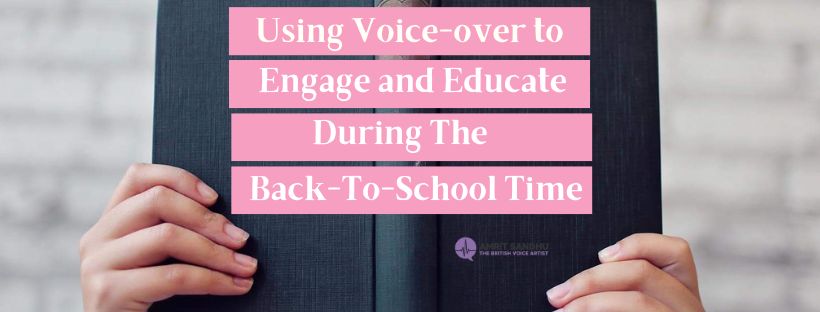The need for creative and interesting instructional content is greater than ever as instructors and students get ready for a new school year. In the field of education, voice-over has become a potent tool that may be used to create dynamic, interactive learning materials instead of static ones. An appropriate voice-over can improve comprehension, sustain student engagement, and produce a more individualized learning experience in instructional videos, virtual classrooms, and e-learning modules.
This blog post will discuss how voice-over can be utilized to effectively engage and teach students about back-to-school topics:
The Function of Voice-Over in Modern Education
The learner and the content are connected through voice-over. It makes writing more vivid, clear, and capable of demystifying difficult ideas. Voice-over is becoming a crucial component of making classes more approachable and interesting, particularly in remote learning settings, thanks to the proliferation of digital education resources. It adds a human element that can help students of all ages find even the most difficult subjects more approachable
Enhancing E-learning Modules
E-learning has become a common practice in modern education, and voice-over is critical to the effectiveness of these programs. A well-done voice-over can help students navigate lessons, underline crucial points, and provide explanations that reinforce comprehension. Voice-over aids pupils in processing and remembering information by breaking it down into manageable chunks. It can also provide a boost of motivation, encouraging students to stay focused and interested throughout the course.
Creating Engaging Virtual Classroom Experiences
In virtual classrooms, where face-to-face interaction is limited, voice-over can help recreate a teacher’s presence. It can be used to narrate lectures, clarify ideas in video lessons, and even give feedback on homework. The tone and timing of the voiceover can have a big impact on the learning environment, making it feel more engaging and less lonely. A friendly and encouraging voice, for example, can foster a supportive environment, whilst a confident and authoritative tone can help convey the importance of the topic being taught.
Supporting Multisensory Learning
Every student has a distinct learning style, and voice-over can help those who prefer auditory learning. Educators may develop multimodal learning experiences for a wider spectrum of pupils by mixing visual content and audio narration. A voice-over, for example, can explain a math problem step by step as a visual aid is used, or it can narrate a historical event while pupils watch related photos or maps. This strategy not only improves comprehension but also memory retention.
Personalized Learning with Multiple Voices
One benefit of voice-over is the opportunity to employ various voices to portray different personalities, perspectives, or issues. This can be especially useful in storytelling, role-playing settings, and debates with diverse perspectives. Using many voices can make content more engaging and relatable for younger students while adding depth to conversations and analyses for older students. Educators can create a more personalized and immersive learning experience by using voices that are relevant to the intended audience.
A Guide to Producing Powerful Instructional Voiceovers
Focusing on a few essential components can help you get the most out of voice-over in instructional materials. These are:
Clarity: With appropriate enunciation and a cadence that corresponds with the subject, the voice-over should be understandable and clear.
Tone: The tone used should be appropriate for both the subject matter and the intended audience. For example, a tone that is more official and authoritative for advanced learners should be more welcoming and approachable for younger students.
Consistency: Maintaining consistency in tone, tempo, and style facilitates the development of a seamless learning experience, which in turn makes it simpler for students to follow along.
Engagement: Students should be kept interested and crucial material should be emphasized by using a variety of intonations, pauses, and emphasis on key themes.
Voice-over is an exceptional chance for instructors to improve their teaching strategies as the school year approaches. Voice-over can improve educational content’s accessibility, engagement, and effectiveness whether it’s delivered via virtual classrooms, e-learning modules, or other digital tools. With voice-over, teachers may create a more engaging and interactive learning environment that helps students succeed all through the school year by carefully analyzing the requirements of their students and the objectives of their classes.



